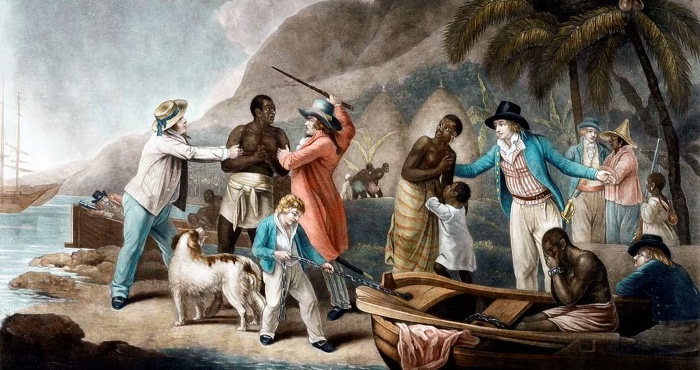Photo courtesy of FT
The Galle Literary Festival took place in the heart of Galle’s fort, inviting diverse voices in poetry and prose to host thought provoking discussions. From philosophy to identity politics, cricket to crime thrillers, the 2025 Galle Literary Festival had something in store for all kinds of writers and readers alike. A range of panels were hosted with titles that included “Legacy: Who do we choose to remember?”, “Foreigner, Expatriate, Immigrant” and “The Future of War”.
Award winning author and journalist Sathnam Sanghera spoke with broadcaster Nihal Arthanayake about his latest bookEmpireworld, which traces the legacies of the British empire across the globe. They discussed Britain’s idea of its imperial history, the world’s experience of it and reckoning with the threads that continue to bind us together.
Empireworld is a follow up to Sathnam’s Empireland, both of which were bestsellers. Sanghera describes being inspired to write the follow up after a trip to Barbados. He learned from local tour guides that British tourists did not want to hear about the history of slavery, who told him, “They want to go to the rum tour, they want to go to the buffet, they want to marvel at the achievements of white people in building these Jacobean mansions in the Caribbean, but they do not want to hear about slavery. They don’t want their vibe to be ruined. You know, the holiday vibe. The tour guide was enraged because he’d taken the job because he wanted to talk about it. And that made me realise I had to write a sequel to Empireland.”
Nihal asked Sathnam what the reception of the book was like, given that it was written by a person of colour rather than a white historian. Sathnam mentioned that someone on Twitter had said that he was not a proper historian like William Dalrymple, instead describing him as a “woke idiot”. The common perception was that a white historian was trustworthy whereas a brown historian’s perspective on colonialism would be too emotional. However, Sathnam noted that some of his black and brown readers have criticised him for not being angry enough in his writing. His analysis was based on historical facts and he added that “pride and shame have nothing to do with this history. You don’t need to feel shame about slavery. I don’t think you were involved. I suspect you were not involved. You’ve got no reason to feel proud because you were not running the British Empire. It’s got nothing to do with your feelings. Just treat it like any other part of history.”
In the context of Sri Lanka’s colonial history, Nihal referred to a section of Empireworld where Sanghera describes wandering around beautiful plants in Kew Gardens. In Sri Lanka, the tea plantations were a key part of the tourism industry. However, they were also sites of massive exploitation, violence and environmental destruction. Botanical gardens helped to build these plantations and they played a part in introducing coffee and rubber plantations to Sri Lanka. The British and the Dutch changed the world by introducing certain plant varieties to different parts of the world, altering the environment and the climate.
Sathnam also reflected on the introduction of indentured labour at the end of slavery. All over the world, there were many indentured labourers from India. The abolitionalists were worried that this would turn into slavery. By this point, people had become addicted to cheap labour. He said, “They were sending industry inspectors. But there was still violence. Often these people were living in the same quarters as the enslaved used to live in, they were treated in the same way. But ultimately it was not the same system because generally they worked five years. They were paid, but not always. And at the end of it, they stayed although they could go back and they built family lives and so on. It’s a very different system to slavery. That’s a million people in the 19th century and the early 20th century. They all had children. So one of the main reasons why there’s Indians wherever you go in the world is because of indenture.” Despite abolishing slavery, Sathnam noted that the abolitionists believed that black and brown people were not equal, saying “They didn’t believe in racial equality. They thought black people were inferior to white people. They just thought that slavery as a system was immoral.”
Even in recent years, it could be seen that many British international charities had their roots in the British Empire. Sathnam cited to the controversial Live Aid song “Do They Know It’s Christmas?” and the idea of the white saviour complex. He said, “People are very defensive when you say you’re accused of being white saviours. Comic Relief was accused of being white saviours. But the reaction to that has been entirely positive. So Comic Relief now makes sure that all their films about Africa are made by local film producers. Isn’t that a good thing? A lot of charities who are connected to this history now insist that their offices are not in London, so they’re not acting like imperialists. They set them up in the places where they’re delivering aid. The charitable sector is an example of how you can embrace this dark history. And you can decolonise. Your brain doesn’t need to explode. You can adapt and become more in touch with history.”
The discussion closed with Nihal asking Sathnam how he would advise readers to have these conversations in their own circles. Sathnam responded, “I think the important thing is to take the feeling out of it. Listen. You can’t do any more. Do not try to have any of these conversations on social media. Social media just turns everything into a talking point. It sticks you in an echo chamber.”
